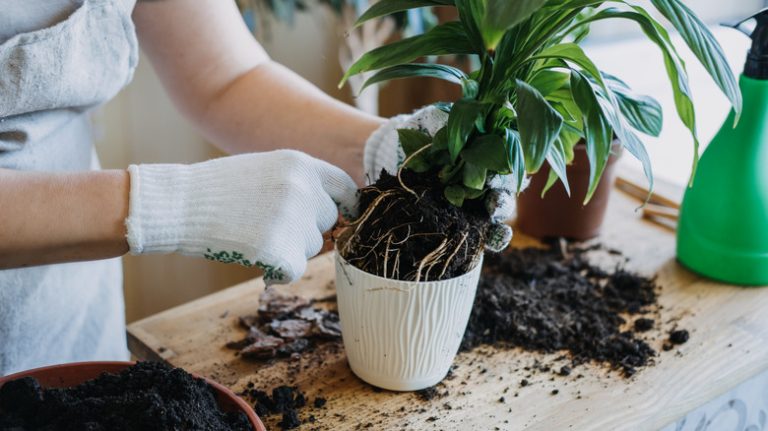The popular herb, mint (Mentha spp.), is known for many of its traits. For one, it’s edible and can be used in various drinks and dishes. It can also be used to mask odors, make an ornamental addition to your garden, or help others as a companion plant. Planting mint as a companion to flowers, vegetables, and some fruits can be tricky though. Even in less-than-ideal growing conditions, the Lamiaceae family member is a vigorous and sometimes weedy plant. Due to its fast-growing habit, the roots and stems of a mint plant will spread out rapidly and smother other plants to grow larger.
Still, gardeners who prefer to repel pests easily and naturally have found ways to make mint work for them in the garden. The simplest way to do so is to keep your mint varieties in their own planter so they can’t spread out. You could also space them further away, bury dividers or pots to keep the roots of your mint plant contained, or choose plants that are more capable of resisting their advances. As far as the best plants to grow alongside mint, we’ve rounded up multiple species that can benefit from the mint plant’s unique traits.
1. Tomatoes

Tomatoes (Solanum lycopersicum) and mint are two edible plants that display growth habits that take over the plants around them. Yet, when these two are grown near each other in pots, they do more than just survive. Mint helps tomatoes hide from aphids, flea beetles, and whiteflies that threaten their well-being. By masking the tomato plant’s smell, mint repels pests from the garden so you can use fewer pesticides and enjoy bug-free fruits.
2. Cabbage

Most brassica species, such as cabbage (Brassica oleracea var. capitata) need a mint plant’s strong scent to keep destructive pests at bay. However, cabbage and mint aren’t always good partners in the garden. They have very similar growing requirements, but thriving mint tends to become weedy and might inhibit the growth of nearby brassicas. Instead, consider placing cut-up mint leaves below your cabbage plants as mulch.
3. Peonies

Emils Lukso/Shutterstock
Such is the case with most mint plant pairings, Itoh peonies (Paeonia) can benefit from being planted with mint due to its pest-repellent properties. Yet, that’s not the only reason the two are sometimes planted together. As the peony plant blooms with its large and showy flowers, they release an odor that mingles with mint’s scent for a delightfully fragrant garden in the spring and summer.
4. Radishes

Ipinchuk/Getty Images
Radishes (Raphanus sativus) are commonly grown root vegetables in home gardens. They are fairly easy to grow, and depending on when they are planted, may be ready to harvest in the spring or fall. Planted with mint, radishes will be protected from pests that want to eat its tender leaves, and they can be harvested together to make a delicious radish and mint salad.
5. Oregano
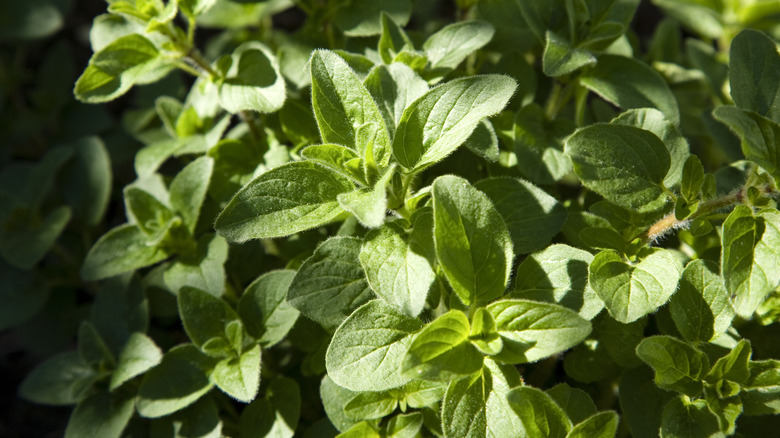
Ayimages/Getty Images
Many herbs don’t grow well with mint, however, oregano (Origanum vulgare) is an exception. Paired with a mentha species, these two team up to fend off a range of pests and attract all kinds of pollinators. Since oregano and mint are both members of the mint family, they tend to grow well together as they enjoy the same growing conditions.
6. Eggplant

nnattalli/Shutterstock
Eggplants (Solanum melongena) are members of the nightshade family, and they grow well with mint like other Solanaceae species, such as tomatoes. Mint helps eggplants grow more easily by fending off aphids, flea beetles, and spider mites. You can also keep your eggplant plants healthy by planting them in moist and fertile soil that receives plenty of direct sunlight.
7. Wax begonias

Amalia Gruber/Shutterstock
Wax begonias (Begonia x semperflorens-cultorum) are flowering plants that produce many red to white-colored flowers throughout the growing season. More often than not, these types of begonias are raised as annuals due to their need for warm temperatures and direct sunlight. Planted with mint, wax begonias offer even more visual interest against mint’s prolific foliage and they receive protection from pests. Just make sure not to plant them too close to each other.
8. Pumpkin
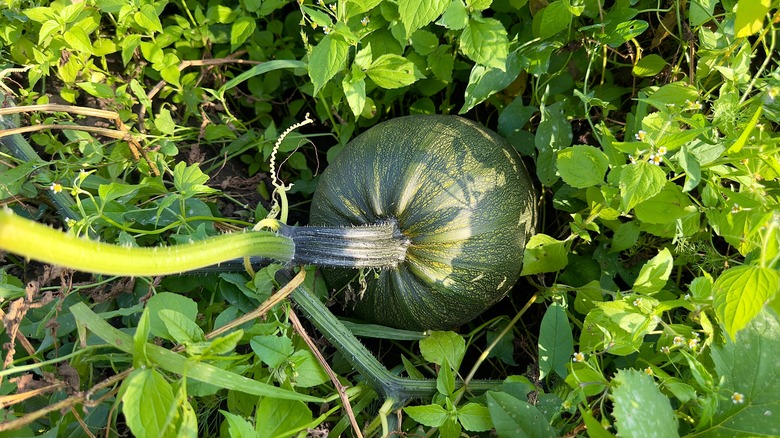
Oleh Bilovus/Shutterstock
Pumpkins (Cucurbita maxima), as well as some other Cucurbits like zucchini and squash, take advantage of mint plants’ ability to draw in pollinators and other beneficial insects to the garden. With the help of these two types of bugs, pumpkins are protected from aphids and beetles, and they are pollinated more easily. In the fall, you’ll be able to harvest more pumpkins with healthier growth thanks to mint.
9. Pot marigolds

Yulia_B/Shutterstock
Pot marigolds (Calendula officinalis), which are also known as calendulas or garden marigolds, are friends to mint. They grow well in a variety of soils, as long as they are well-draining, and they appreciate some shade provided by the taller herb. However, it’s wise to keep one or both of these plants in a container, so the mint can’t kill the pot marigold with its aggressive growth.
10. Cauliflower

Paul Maguire/Shutterstock
Cauliflower (Brassica oleracea, Botrytis Group), which is another brassica species along with radishes and cabbage, is another good partner for mint plants. Cauliflower’s green leaves are immensely attractive to harmful insects that want to eat them. Even if a mint plant is potted nearby, the pest population will dwindle considerably so you’ll have a better harvest in the summer or fall.
11. Turnips

Khawaja gulam fareed/Shutterstock
Turnips (Brassica rapa subsp. rapifera) are a cool-weather crop that can be identified by their leafy green tops and thick white roots. To keep away threatening insects, they can be planted as neighbors to any mint variety including spearmint, catmint, and peppermint. Alternatively, other aromatic herbs such as thyme, basil, and borage are also effective in repelling turnips’ worst pests.
12. Onions

Lechatnoir/Getty Images
Onions (Allium cepa) grow well with mint. They are already heavily fragranced which helps keep hungry bugs away from the plant and others nearby. However, when mint is planted as a companion to onions, it’s thought that the flavor of the allium species will be enhanced. Even if this isn’t the case for you, planting mint and onions together should have a powerful effect on the rest of your garden as pests are pushed out.
13. Beans
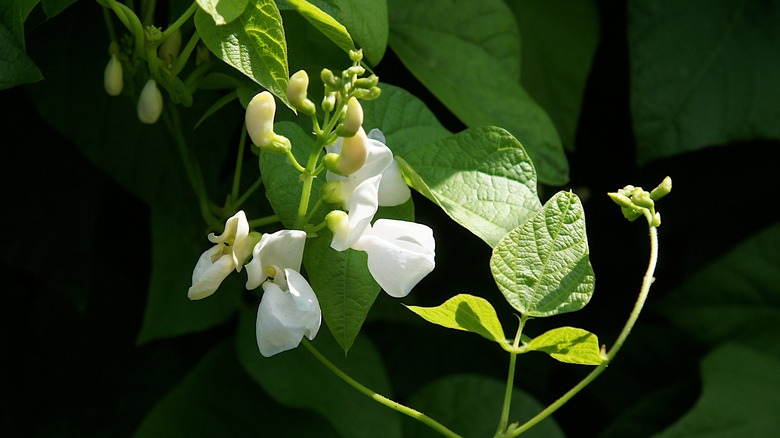
Volodymyr Nikitenko/Shutterstock
When companion planting with pole beans (Phaseolus coccineus) and other legumes, it’s normally the beans that are doing the heavy lifting in the relationship. But, when they are planted with mint they can catch a break. Mint will appreciate the beans’ nitrogen-fixing abilities, and the beans will definitely benefit from a mint plant’s natural power to deter hungry rodents, bean beetles, and other threats.
14. Kale

sophiecat/Shutterstock
Kale (Brassica oleracea, Acephala Group) is known for its blue-green leaves that are packed with essential nutrients. The foliage is usually harvested after the first frost in the fall. Yet, if you had a pest problem this year, it’s likely that many of your leaves will be unusable. To avoid this, grow mint nearby to scare away pests with its scent and attract beneficial insects that eat any harmful bugs still invading your garden.
15. French marigolds

4wahid_vidi87/Shutterstock
French marigold flowers (Tagetes patula) are different from the pot marigolds we’ve already discussed. They have similar flowers, but their effects in home gardens are much different. Typically, French marigolds are used as protection against pests for other plants that are susceptible to attacks from nematodes. Grown with mint, French marigolds can keep watch underground, while mint repels problematic insects above ground.
16. Beets

Foodandwinephotography/Getty Images
A beet (Beta vulgaris) is known for its large purple root and tall foliage. In the garden, the edible plant has fewer problems than you might expect, but they could use a little help through companion planting. Consider growing it near a pot of mint, or if you need to save on space you can simply work some mint leaves into its soil to keep away pests.
17. Bell peppers

Tomazl/Getty Images
Bell pepper plants (Capsicum annuum, Grossum group) are another nightshade species that can benefit from growing with mint. In addition to defending the plant from its most common pests, mint will also bring forth more pollinators during the peppers’ bloom season. This should allow you to grow larger yields of bell peppers that are healthier than in years past.
18. Carrots

Tom Merton/Getty Images
Carrots (Daucus carota var. sativus) can be helped by mint which repels carrot rust flies that cause the root vegetable to sustain dying leaves, stunted growth, and root tunnels or scarring. However, like with many other vegetables in this collection, mint plants should not be planted too close so they won’t overtake your carrots. You can contain their growth with planters buried in the soil or placed above ground.
19. Roses
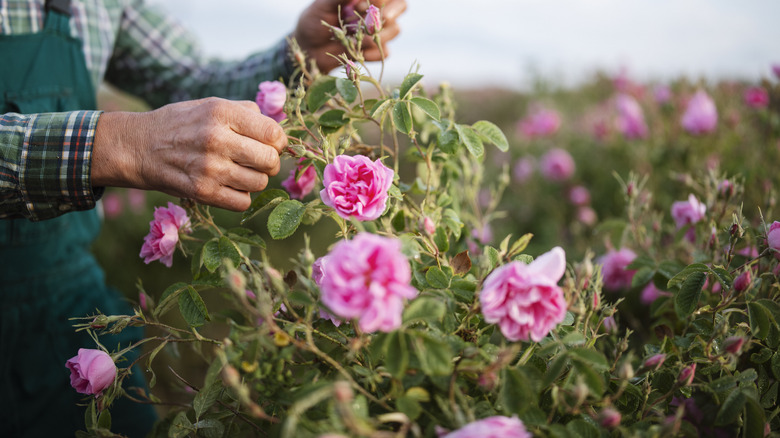
Artistgndphotography/Getty Images
As long as your hybrid tea roses (Rosa spp.) are mature, planting them with mint should be completely safe. The two make good partners as mint acts like a living mulch and a pest repellent all at once. Your rose bushes will be safe from aphids and their bright flowers will look great against the foliage of the fragrant herb.
20. Peas

Natallia Ustsinava/Shutterstock
Similarly to pole beans, peas (Pisum sativum) can take advantage of your mint plants’ ability to send vermin packing. Their strongly scented leaves are repulsive to mice, rats, and other rodents that would normally eat the peas and flower buds off of your plant. Additionally, because mint is a heavy feeder, it will enjoy being grown next to this plant which fixes the nitrogen in its soil.




